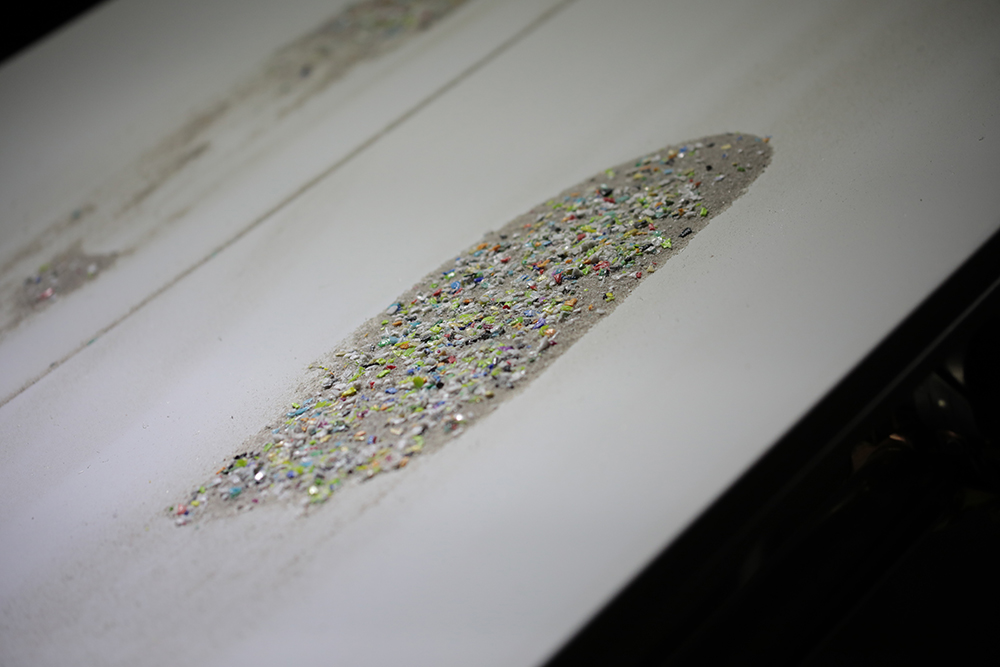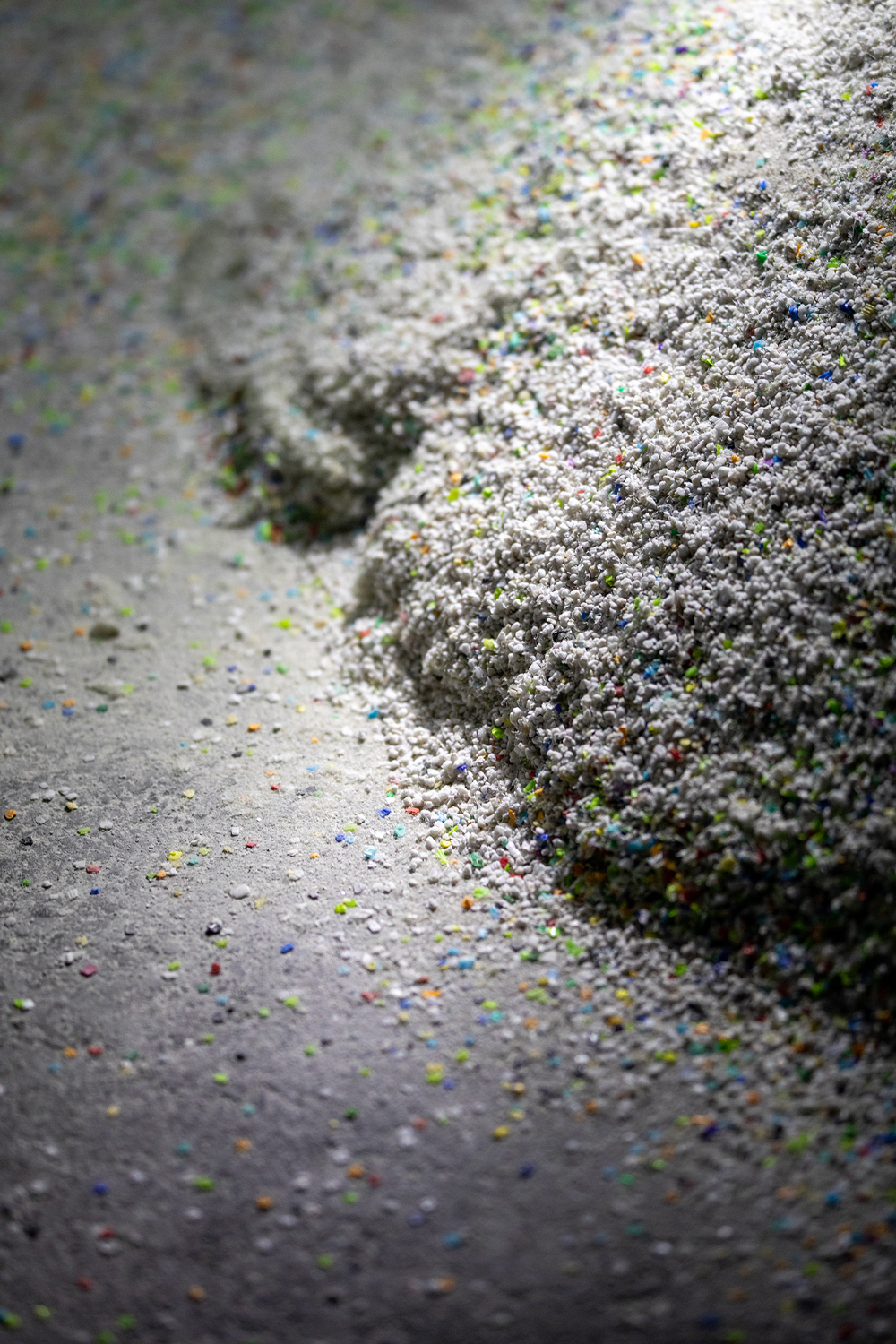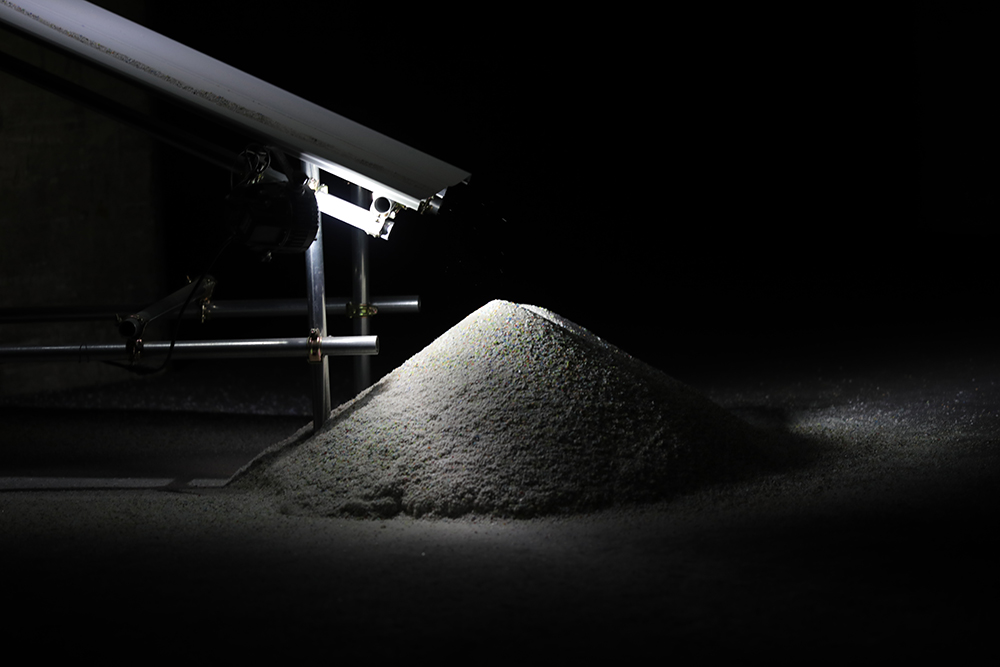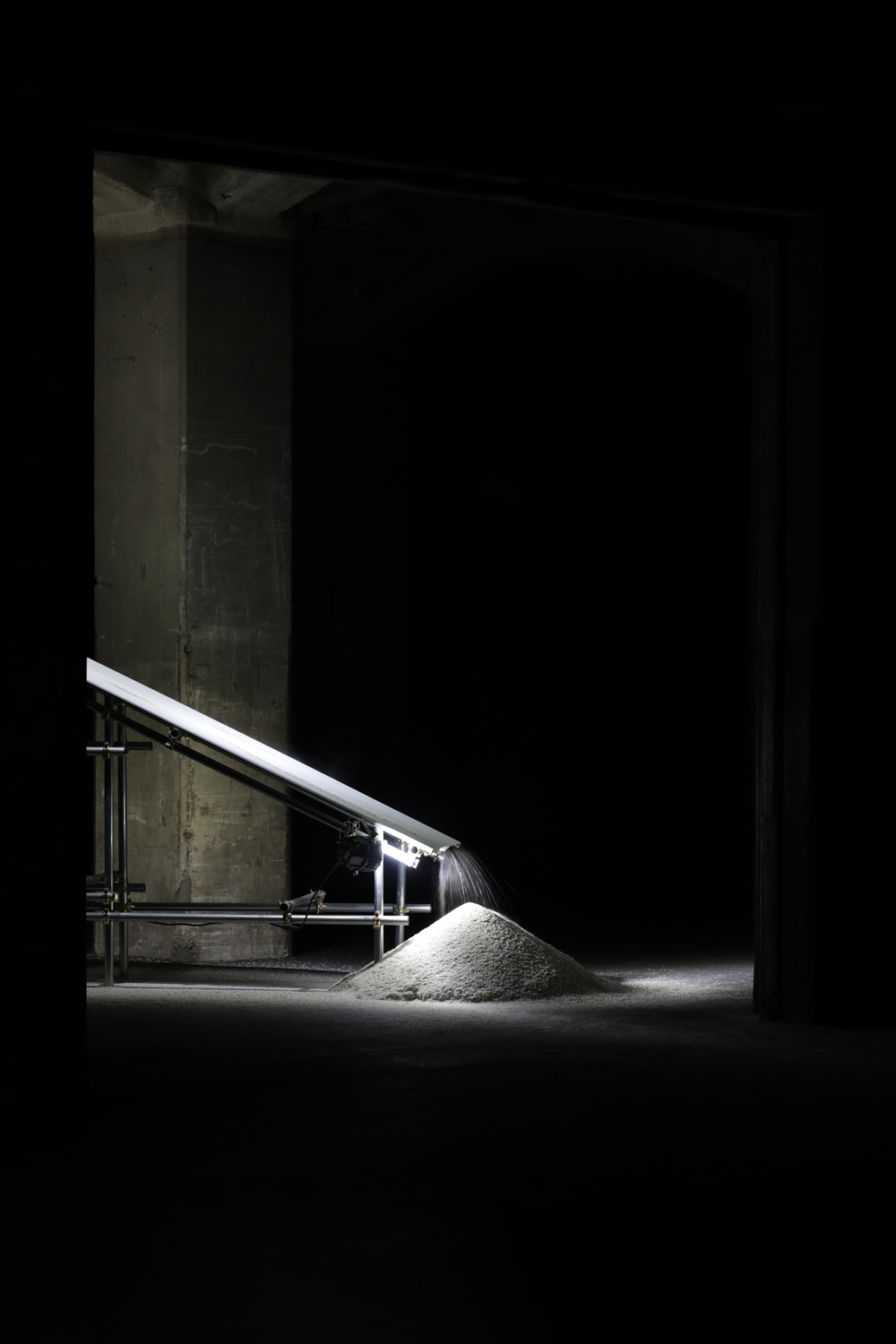















2023
installation
Photo: takehiro iikawa
From the 1960s to the 2000s, a new city was built in Kobe by cutting down the mountains. And the sand that came out of it was used to create artificial islands using belt conveyors and container ships. The development called "mountain goes to sea" was the largest in the world at the time. It is said that the area around Suma, a new town in the western part of Kobe City, was world-famous for collecting plant fossils from about 35 million years ago.
The Kobe Group (about 35 million years ago) deposited on the alluvium (about 20,000 years ago) in the eastern part of Port Island (artificial island). That is, on artificial islands, old soil was layered on top of new soil, and the order of strata was reversed. Artificial island is prominent example of how Anthropocene strata were displaced by humans. Until now, the history of the earth has been measured by layers of soil, but suddenly a layer appeared that cut the connection between time and space.
For example, fossils may come out of places where they shouldn't exist. It can be said that 35 million years have moved by humans.
I also learned from the interviews that it is becoming impossible for geologists and archaeologists to read history based on conventional theories. Investigating this extremely peculiar variation of strata, this work visualizes the strata created by humans and the act of construction and development by humans.
Sand and crushed plastic intermittently fall from the whiteboards of the temporary construction enclosure. Sand and plastic are deposited and new strata are formed there. A research book was also exhibited.